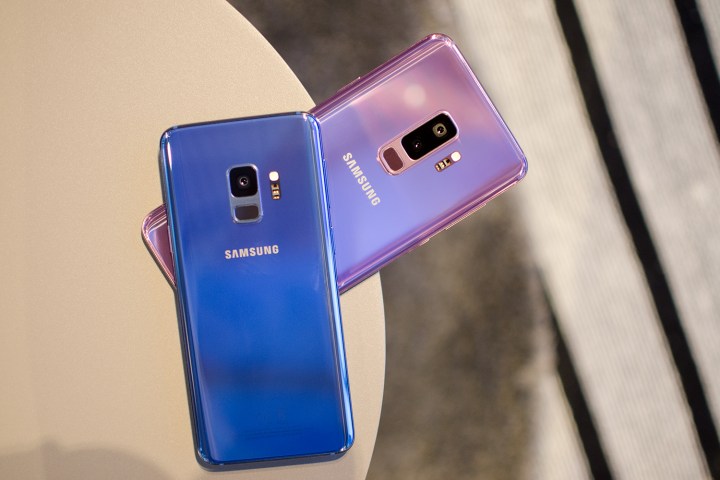
Until a few years ago, smartphone speakers could almost universally be described as dreadful. If you wanted to watch YouTube or Netflix you were faced with two options: Use headphones or settle for a sub-par audio experience via your smartphone speaker.
But a few years ago, things started to change. Stereo sound began making its way to many flagship smartphones. Samsung however, was a bit slow to hop on the bandwagon, waiting until the Galaxy S9 and S9 Plus to release its first flagships with stereo sound.
That’s not to say Samsung is not passionate about high-end audio though. In 2017 Samsung acquired Harman and its associated brands. Within months of the acquisition, Samsung had partnered with AKG to create AKG-tuned earbuds for the release of the Galaxy S8 and S8 Plus. While it wasn’t the stereo speaker setup many Galaxy owners hoped for, it was a step in the right direction.
Samsung
When Samsung announced the Galaxy S9 and S9 Plus in February, users were elated to see that the phones finally included stereo sound. Samsung executives told Digital Trends the decision to add stereo sound to the Galaxy S9 came from its own internal research. “We saw consumer usage of Bluetooth speakers/headphones was similar to usage of built-in speakers. We also listened to our customers and heard they wanted improved audio to match the immersive Infinity Display.”
The audio on the Galaxy S9 and S9 Plus isn’t your run-of-the-mill stereo setup, however: Samsung worked closely with AKG and Dolby Atmos to create an immersive audio experience that it believes is unmatched by any other smartphone. In the company’s upcoming blog post, it describes the work that went behind bringing an awesome audio experience to the Galaxy S9 and S9 Plus.
Figuring out how to bring stereo sound to the Galaxy S9 was a bit of an uphill battle. Since its previous Galaxy flagships (and many smartphones in general) only have a single bottom-firing speaker, Samsung had to figure out how to add an additional dynamic speaker to the phone.

Samsung
Sure, adding another speaker sounds fairly simple, but it’s actually a complex process. In addition to figuring out how to add another speaker without making the Galaxy S9 / S9 Plus larger or more bulky, the company also had to figure out how to increase the size of its existing bottom-firing speaker and make sure there was no interference from the phones’ other components.
There was also the issue of the placement of its bottom-firing speaker. While other phones like the Pixel two have incorporated both of its speaks into the front of the phone, Samsung’s bottom-firing speaker actually sits on the bottom of the phone next to the headphone jack.
Samsung
When we asked executives at Samsung why they didn’t just move the bottom-firing speaker to the front of the phone, they explained that the decision was practical. “The reason for the speaker placement is due to the way smartphones are used today – in many cases, people place their smartphones horizontally when they watch videos.” In other words, Samsung opted to leave the speaker in the bottom of the phone as opposed to the front because you would be less likely to block the speaker with your hand while holding the phone.
While leaving the speaker in the bottom of the phone may be better for practical reasons, it created a new problem; the speakers faced in two different directions. To overcome its final obstacle, Samsung partnered with AKG to tune the output level of each speaker to account for their placement.
After over a year of hard work, the results on the Samsung Galaxy S9 and S9 Plus are pretty impressive. The Galaxy S9 and S9 Plus feature spectacular stereo sound that’s 1.4 times louder than their predecessors. And to top off the overall experience, Samsung partnered with Dolby Atmos on the Galaxy S9 and S9 Plus to create stunning three-dimensional sound.
While Samsung may have taken its time to bring stereo sound to its Galaxy flagships, it was time well spent. The amazingly rich audio experience on the Samsung Galaxy S9 and S9 Plus actually makes streaming on your phone a pleasure.





